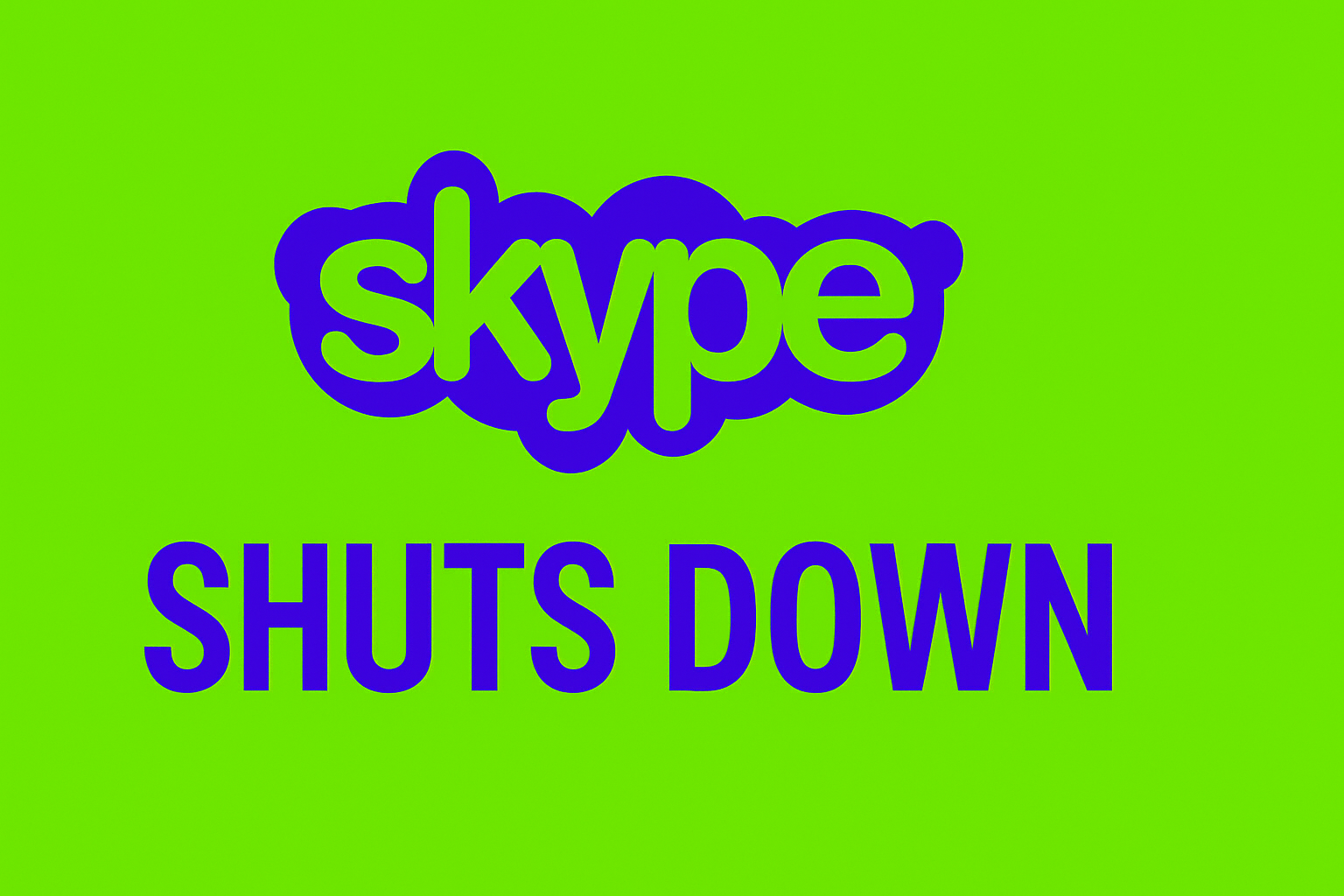Digital Grief As Skype Shuts Down After 22 Years

Microsoft Shifts Focus to Teams
After 22 years, Skype shut down today, and Microsoft stopped its development and decided to focus on Microsoft Teams. Skype users can shift to the free version of Teams, and their contacts and chat history will move over automatically. The global video calling pioneer will no longer be available from today, and Skype for Business users will be fully integrated into Teams, which individual users will need to switch to manually.
Teams is Microsoft’s modern-day, all-purpose app for chatting and working together, and it will be a worthwhile replacement for Skype. Skype began in 20023 and reached up to 400 million registered users in its prime, but now only 23 million are left. Apps like Zoom and Discord that gained fame during COVID gave tough competition to Skype, and that made it less popular over time. Skype shuts down because Microsoft believes Teams fits the needs of today’s businesses better.
Skype Shuts Down Today to Give Way to Teams
While Skype shuts down, users will be able to log in to Teams using their Skype credentials and retain their chats and contacts. If you do not wish to join Teams, you can export your Skype data until January 2026, after which all inactive user data will be deleted. Paid Skype features will keep working until the billing period ends.
Microsoft Teams can handle up to 10,000 people on a teleconference call, and it also includes AI tools that boost productivity and fit today’s needs better. Some core features are similar to Skype, like one-on-one calls, group calls, messaging, and file sharing. Enhanced features include hosting meetings, managing calendars, and building communities for free.
The Skype shut down signals the end of an era, and Microsoft Teams is more enterprise-focused than Skype was. This marks a major shift in Microsoft’s communications strategy and raises questions about the evolution of business communications.
Skype defined internet video calling and enjoyed its heyday in the early 2010s as the tool of choice for families, freelancers, and many businesses. It was acquired by Microsoft in 2011 for $8.5 billion, and “Skype me” soon became a verb and part of the tech lexicon.
Skype shuts down today because of the explosive growth of messaging platforms like WhatsApp, Facebook, and Zoom, which have outpaced Skype’s innovations. Skype also did not leverage the boom in video communication triggered by the pandemic, something Zoom and Teams managed to do. As Microsoft focused on Teams, and connected it with Microsoft Office and cloud products, Skype did not have any competitive corporate advantage, forcing today’s Skype shut down.
Skype’s shrinking footprint is the reason for the sudden announcement of the permanent Skype shut down. Microsoft will ensure a seamless transition to Teams and welcome users to advanced collaboration features, better security and integration with Microsoft 365.
Conclusion
The Skype shut down will have a significant impact on its current users, who include small businesses and who rely on its simple interface for messaging, video chats, and low-cost international dialling. Teams is far more complex and is tailored to business needs. Skype will leave a void in the market for a user-friendly, simple video calling solution.
The closure of Skype underlines the changes in digital communication, and if the gap Skype leaves will be filled by rivals like WhatsApp or FaceTime. The corporatization and complexity of Teams are because of Microsoft’s vision for streamlined communication, with a special focus on productivity and collaboration.
About the Author: Sarah Zimmerman is a seasoned crypto and Web3 news writer passionate about uncovering the latest developments in the digital asset space. With years of hands-on experience covering blockchain innovations, cryptocurrency trends, and decentralized technologies, she strives to deliver insightful and balanced news that empowers her readers. Her work is dedicated to demystifying complex topics and keeping you informed about the ever-evolving world of technology.
Sarah Zimmerman
Published on Other News Site











